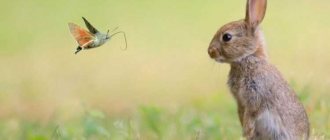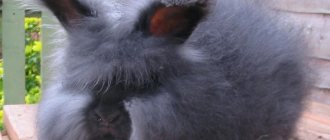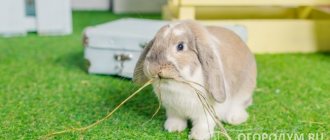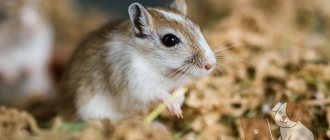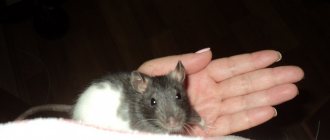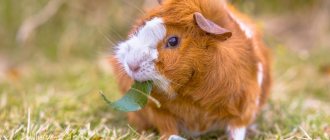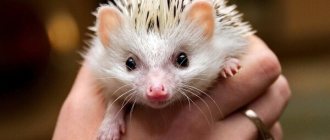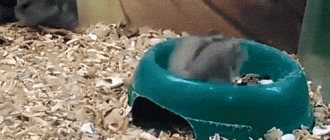Small rabbits are cute animals of different breeds, whose weight rarely exceeds 1.5 kilograms. They are used as pets. More than 60 decorative and dwarf breeds are known. Before buying a miniature animal, you need to get to know the most prominent representatives.
Dwarf rabbit
Keeping rabbits at home
You need to prepare not only for the appearance of a rabbit in the house, but also for its transportation.
To transport a rodent, it is advisable to purchase a special carrier - they are sold in almost any pet store. If this is not available, you can use a box or basket with holes and a soft bottom. After moving into a new home, it is important to ensure complete silence for the rodent - this will reduce the likelihood of stress. When the rabbit gets used to the new environment, you can accustom it to your hands
It is not advisable to carry an untamed animal in your arms.
You can keep rabbits in an apartment or in a yard. When choosing a place to live, you must take into account that the comfort of rodents depends on the following factors:
- Colored rabbits require optimal temperature conditions, no more than 25 degrees and no lower than 17 degrees. Otherwise, hyperthermia or severe hypothermia may occur. Animals can get sunstroke when kept outside in the summer, so their cages should be carefully protected from direct rays of the sun.
- Animals do not tolerate high humidity and drafts indoors, this leads to diseases of the respiratory system.
- The cage or enclosure where pets are kept should be cleaned periodically - the convenience of cleaning should be provided for in advance. It is necessary to replace the bedding layer every 7 days and remove dirt and droppings. The cage can be disinfected using a manganese solution; the drinkers and feeders are treated with boiling water. Pollution leads to the development of serious diseases.
- Almost all dwarf rabbit breeds are characterized by mobility, so they should not be kept in cramped cages or enclosures. Pets are often allowed to roam freely.
- Pets are only allowed to be given fresh food and clean water. Feed mixtures should be selected individually, depending on the age of the individuals. The diet of rodents must be balanced so that all useful microelements are present.
Play area for pet rabbit
You should not keep several males in one cage, because they often have various conflicts over territory. When keeping females together, such problems do not arise.
Contents in cages
At home, the rabbit is often allowed to roam freely around the apartment, but its movement will have to be controlled. These animals love to chew everything that gets in their way, and that is why they are not kept without a cage at all - the rodent must have its own home, where it can be locked at night or during the absence of the owner.
Cellular content
Despite the small body weight, it is recommended to choose a spacious cage for individuals. It is advisable to purchase or make a structure for pets in several tiers with various stairs and toys. The optimal length of the house for each rabbit is 55-70 cm. If the rabbits are housed closely, they may develop problems with their joints.
You should not choose cages with slatted floors - this could cause your pet to damage the pads on its paws. The most optimal would be a solid floor made of plastic or wood. But the sides and top of the cage can be mesh, as well as the door - the main thing is that the metal is not painted - rabbits like to sharpen their teeth on the bars and can be poisoned by paint. Make sure that the entrance to the cage is tightly closed, otherwise the rabbit can get out at any time.
Rabbit cage + TV stand
The cage floor is covered with a bedding of hay and sawdust, the layer of which should be quite dense. You should not choose fillers that are too fine in structure, otherwise they will become clogged in the respiratory tract of rodents.
Keeping in an enclosure
Not all rabbit breeding enthusiasts prefer to keep animals in cages, and in this case, you can purchase or build a small enclosure in your apartment or yard. Pet stores sell various designs of such fences. In the inside of the enclosure, as in the cage, there should be drinking bowls, feeders and other equipment.
It is possible to build an open-air enclosure in apartment conditions only in the absence of aggressive cats and dogs; indoor housing options are usually installed on the street. This is done in order to protect rabbits from other rodents and predators.
Aviary maintenance
Dwarf Hotot
Dwarf Hotot
These rabbits were immediately recognizable by their snow-white fur and large black eyes. They have black markings around their eyes that appear to be covered in thick eyeliner. They have thick fur and come in other color variations. However, white ones are more common, and there may also be black and chocolate-brown dwarf hotots.
CONDITIONS OF DETENTION
Despite the fact that rabbits can be allowed to run around the house, they must purchase a cage. The cage is where he will spend most of his time, it will protect him and will be the place where he feeds and rests. The place where the rabbit lives should be spacious.
The rabbit is active, in a cramped space it will experience stress, and the bedding will have to be changed more often. Typically, a cage is chosen that is at least 70 cm in length, and it should not contain upper floors to avoid injury to the animal.
The cage is usually one that is made of a metal lattice. The tray should be high so that bedding and debris are not scattered when the pet moves.
Some owners choose “duna” type enclosures - they are made of transparent plastic, which protects against drafts and debris flying outside the home. When choosing a closed cage, keep in mind that the ventilation in it is poor; in the summer the animal may overheat.
Video: features of different breeds
The pet should be able to calmly stretch out while resting. A food bowl, drinking bowl and hay box are installed inside the cage. It is advisable to put up a special house where the rabbit can hide. The floor should not be slippery.
Filler is poured into the bottom of the home. The most accessible is sawdust. Another option is wood pellets. Some owners use hay. This option is pleasant for rabbits, but when moistened, hay quickly deteriorates and does not retain the odor well; in addition, rabbits eat it. On average, the litter is changed once a week, but the frequency depends on the chosen litter. The animal is not allowed to sit on wet and dirty litter; this will negatively affect its health and a characteristic odor will appear in the room.
We tell you how to determine the sex of a rabbit. What is the difference between a female and a male?
Here are recommendations for keeping, breeding, and feeding canaries living at home in a cage.
What the giant rabbit Risen is like, how he lives at home, read here.
The rabbit is a herbivore. The basis of his diet is high-quality hay. In the summer, he enjoys eating fresh grass, but care must be taken to avoid poisonous plants.
Root vegetables are beneficial for animals. Nowadays there is a large selection of industrial feeds, which contain all the necessary microelements and vitamins.
You should not take the cheapest options, this can affect your health. Grass pellets should predominate in the feed. Hay and food must be present in the cage at all times.
Fresh branches of non-poisonous trees are given as additional food: birch, apple, willow. To replenish the supply of minerals, a special stone is installed in the cage; it can be easily purchased at a pet store. The cage must have a closed type drinker, suitable with a ball tip or a nipple one. A bowl of water is not allowed, as the animal will easily turn it over.
Video: how to feed correctly?
Sexual behavior
Puberty in rabbits can cause several problems for the owner. Males begin to mark their territory, become aggressive, and pester other animals and toys. If the animal is not planned for reproduction, then it needs to be castrated; it is recommended to do this from 5 months.
If the owner has decided to breed a female, then it is worth considering whether this is really necessary. It is customary to breed purebred animals that are ready for this. Every pregnancy is a risk for the body, and there is always a chance of losing a pet.
Green iguana at home: basic rules for keeping an aquarium, feeding, caring for them.
Unfortunately, sometimes a rabbit can get sick. This often occurs due to oversight on the part of the owner. You should periodically take preventive measures against infection with worms, the drug will be recommended by your veterinarian.
Rabbits are vaccinated against viral hemorrhagic disease and myxomatosis. The choice of vaccine and vaccination plan should be made by a veterinarian.
Miniature Cashmere Lop
Miniature Cashmere Lop
These rabbits come from the larger cashmere salmon family of rabbits. However, these rabbits are also very famous and famous as pets. They will need care and quality food to stay healthy and happy, and they come in a variety of breeds. Some of these breeds are easy to find, while others are quite difficult to find.
Feeding dwarf rabbits
We told you how to care for a dwarf rabbit. Now let's talk about feeding. What can dwarf rabbits eat? These are herbivorous animals, so the basis of their diet is hay or fresh grass. They should always be in a cage or enclosure. Dwarf breeds have a small stomach, they eat often (almost all the time), in small portions. You can buy hay at a pet store or prepare it yourself.
When collecting herbs, it is important to ensure that you do not get poisonous ones (buttercups, henbane, spurge, lilies of the valley, dope, etc.)
In addition to grass, the diet includes succulent food - carrots, boiled potatoes, cucumber peelings, cabbage leaves, watermelon rinds. Red beets are contraindicated for rabbits. Potatoes can be boiled in salted water. Rabbits can be given fruits - apples, strawberries, pears. Dried fruits are prepared for the winter, which the animals eat with pleasure.
It is important to know how much fruit you can give your rabbit. It is best to treat him with such food 2-3 times a week, in the amount of 10-15 grams
The animals also need to be given grain. You can feed special food for dwarf rabbits, consisting of various grains, dried fruits with hay additives. If this is not possible, make a mixture of oats, wheat, corn and barley in equal parts. So that pets can sharpen their teeth at home, they are given twigs; animals eat rowan, birch, maple, willow, and oak. To prevent vitamin deficiency in winter, spruce or pine branches are useful.
Be sure to include mineral supplements in your diet. Calcium is very important for rabbits. When it is deficient, dangerous symptoms such as convulsions, heart failure appear, and small rabbits can even die from this. To compensate for the deficiency, animals are given bone meal, chalk or special preparations. In winter, it is best to add vitamin and mineral complexes to your diet. If there is a lack of vitamins, rabbits may develop diseases, the treatment of which should be carried out after consultation with a veterinarian.
Dutch Fold (Holland Lop)
Holland Lop
This is a dwarf rabbit that weighs 2 to 4 pounds as an adult. They have a compact, wide and short body, and their main distinguishing feature is large and floppy ears. They have a lifespan of up to 7 years and are very friendly and sociable.
Possible problems
In addition to the impressive list of advantages of keeping decorative rabbits, you need to familiarize yourself with the disadvantages, which, unfortunately, are many.
You need to take care of the cute little ears every day - trim their claws if necessary, comb their fur, and monitor their health.
If care is poor, an unpleasant odor begins to emanate from the cage or enclosure where rabbits live. And if you leave an animal alone for several days, even its fur will begin to smell stench.
The living area of decorative rabbits must be cleaned every day. But it is not always possible to devote enough time to this procedure.
Despite the fact that rabbits are loyal to furniture and corners, when free to roam in an apartment or house, they are capable of chewing through wires, easily accessible things, and also scratching wallpaper.
The molting period of decorative rabbits is considered one of the most difficult
The owner of the animals has to pay extra attention to the pet’s fur and comb it thoroughly. And then clean his territory and the area close to the enclosure from small hairs.
The dimensions of the cage for keeping decorative rabbits are of decent size; accordingly, the room for its placement should be spacious.
Despite the usual cute image, the character and behavior of many breeds of decorative rabbits is not soft.
They will not ask to be held; on the contrary, once in the owner’s arms, they may begin to kick, kick with their hind legs, and some even bite.
Mature decorative rabbits begin to mark their territory. They scatter waste from their own body throughout the enclosure, and after indoor walks the owner will have to clean the floors of feces. The smell from the rabbit will be appropriate, but only sterilization will help get rid of it. Another disadvantage is mandatory vaccination.
In general, keeping decorative fluffies with long ears is not difficult if a whole family lives in the house. It will not be easy to maintain them alone; a sufficient amount of time and effort is spent on them.
Jersey Wooly
Jersey Wooly
These small rabbits have very small ears, reaching 2 to 3 inches in length. Something that makes these rabbits unique is their square, almost "mug-like" head. They come in six different recognized rabbit groups, and they come in a variety of palettes and pattern combinations.
Rules for choosing a good individual
In order to choose a good and ideally healthy individual rabbit, you need to pay attention to both its external characteristics and characteristic behavioral features
When choosing a baby rabbit, you need to pay attention to the characteristic features of the breed
It is important to remember the following signs that indicate full compliance of an individual with the norms of its breed:
- dense and muscular build;
- weight from 0.8 to 1.5 kg (ideally 1.3 kg);
- thick, dense wool from 40 to 70 millimeters long;
- broad shoulders and chest;
- shortened front legs;
- rounded shape of the rear part with a tight-fitting, vertically directed tail of a small size;
- a large head, which when viewed in profile looks round, and when viewed from the front - short and wide (for females the ideal value at eye level is 50 mm, and for males - 55 mm);
- ears with rounding at the very tips (their length can be from 55 to 70 millimeters;
- expressive and brilliant eyes of large size and slightly convex shape.
The fox rabbit is easily confused with the Angora rabbit
In addition, you should be aware of the signs that are unacceptable for a dwarf fox rabbit:
- the body is elongated, elongated, having a loose structure;
- a noticeably narrowed chest in combination with a large and massive dewlap;
- elongated shoulders, the proportions of which are not in harmony with other parts of the body;
- front and rear legs that are too long or crooked;
- a narrowed or sagging lower part of the body with a sagging or insufficiently tight-fitting tail;
- twisted claws;
- elongated or narrowed head shape;
- pronounced elongated neck;
- widely spaced ears, having an elongated shape without curves;
- small eyes lacking a healthy shine;
- short or uneven coat length;
- sloppy fur - matted or dirty;
- excess body weight;
- abnormal exhaustion;
- malocclusion.
When examining a dwarf fox rabbit, you need to pay attention to its fur - in a healthy individual it is shiny, dense and thick, without the slightest bald spots or combed damage. To assess the condition of the skin, you should stroke the animal several times against the growth of the fur.
The eyes should be absolutely clean and shiny. The presence of redness and discharge may indicate conjunctivitis.
It is important to inspect the animal
The next important point is the condition of the ears. There should be no discharge, redness, inflammation or scabs in the inner ear. Discharge from the nasal passages is also unacceptable.
When completing the examination, you should pay attention to the condition of the fur surrounding the anus - the presence of stuck together lumps, contamination with feces, as well as an unpleasant odor indicate a pathology of the gastrointestinal tract or the feeding and keeping of the animal in unfavorable conditions
When choosing a pet, it is important to pay attention to characteristic behavioral features
Fox rabbits have a playful and friendly disposition, so you should be wary if you detect opposite manifestations of character. Under no circumstances should you buy a baby rabbit if it has no interest in the world around you and no appetite, and also if it does not move around the cage, but constantly tries to hide in the house, frightened of people and any sounds. You should also avoid buying an animal whose behavior is characterized by increased excitability and aggressiveness.
Breeding and purchasing rabbits
It is better to buy pets from a trusted pet store rather than from the market. They should be taken from friends who have been breeding and raising animals for a long time. Another option is a special nursery.
Dwarf rabbits weigh from 1.5 to 2.5 kg, differing in the shape of the head and body, the length of the ears and the thickness of the coat. Their goal is to please their owners with their appearance, affectionate nature and playfulness.
When choosing an animal, it is worth considering the following nuances:
- Carefully inspect the cage. It should be clean, neat, without the smell of urine.
- If a person contacts a nursery or buys a purebred animal at a pet store, it is worth asking to see its parents and other animals from the same litter. They all must be the same size and fully comply with the standard.
- The animal should be active, curious, with a raised muzzle and protruding ears.
- The coat should be clean, smooth, shiny and free of tangles. There should be no feces left under the tail.
If you do not carefully examine and choose a dwarf rabbit at random, there is a chance that you will buy a sick individual that will need treatment. It is better to buy an animal at the age of 3-5 months.
Breeding dwarf rabbits is not easy. Many breeds are characterized by poor health and poor survival of young animals. Sometimes it is difficult to maintain the characteristics of a particular variety, the correct colors. But there are also persistent species, for example, Polish rabbits or Hermelinas. Here are some basic rules for breeding dwarf rabbits:
- Sexual maturity of animals occurs at 6-7 months
- It is necessary to correctly determine the hunting period. Boys can become aggressive at this time, the girl bites
- They place the female with the male, and not vice versa
- If the rabbits “get along” in character, they will mate (otherwise the female will begin to drive away the male)
- After 2-3 matings the female is removed
- Repeated mating is carried out in a day
The gestation period is short, small rabbits are born after a month. Before lambing, the female begins to make a nest from sawdust and her own hair, which she plucks from the breasts and around the nipples. Young female rabbits may not be very good mothers. Therefore, when breeding, it is better to have an experienced female to whom you can place the baby rabbits. If this is not the case, babies will have to be bottle-fed with special formulas. Often they simply die.
Buying rabbits
You can buy animals at a pet store or find a good dwarf rabbit nursery. They are in many cities of Russia - in Moscow, St. Petersburg, Ufa, Vladimir, Yekaterinburg and other regions. There is also delivery of dwarf rabbits to different localities. Before deciding to “adopt a rabbit,” you should carefully study the features of keeping, choose the right breed, and read everything about dwarf rabbits, caring for them and feeding them.
Some unscrupulous breeders slip ordinary rabbits under the guise of dwarf ones. Ask to see the parents to ensure they are miniature in size and distinguish them from larger species. It is best to buy animals at 1.5-2.5 months. These babies are easy to care for and it is easier to distinguish the characteristics of their breed. How much a miniature rabbit costs depends on the name of the variety.
Lion head
The lion-headed rabbit has small pointed ears, a cute crest above a cute face and, of course, a mane. The breed has about 60 different coat colors. Pets weigh up to 2 kg.
These rabbits are friendly and peaceful, they love to play and often come to their owner for affection. Training “lion cubs” is not very easy, but with due diligence, the pet can learn a few simple commands.
Features of dwarf short-haired rabbits
The first dwarf rabbits were bred by Dutch breeders back in the 30s. These animals were obtained by crossing wild red-eyed and Polish rabbits.
Tamed rabbits are adapted to living at home
Initially, all the animals had only a gray coat color, like their wild predecessors, but then specialists managed to obtain a black rodent. However, over the years, global work has been done, and this has led to the emergence of other colored fur coat colors.
Appearance
Standard dwarf short-haired rabbits have the following breed characteristics:
- Average body weight is about one and a half kilograms.
- The body is dense, the legs are short.
- Dwarf rabbits have very miniature ears. Usually their length is no more than five centimeters.
- The head is massive, the tail is short and fits tightly to the body.
- The coat is short, but very thick and shiny.
Dwarfs have thick, lush fur
The breed standard initially included 20 main colors, but when crossed, they turned out to be much more. The most popular of them are:
- chinchilla;
- red;
- butterfly;
- black;
- luxury;
- Havana;
- Japanese;
- Siamese;
- Russian;
- silver;
- agouti;
- hotot
Despite the huge variety of coat colors of these rabbits, the most popular are rodents with a white fur coat and a black even spot near the eyes (butterfly color).
Butterfly rabbit
It is extremely rare to find snow-white dwarf short-haired rabbits, which is why they are especially valued among rabbit breeding enthusiasts. Specialists have to spend a lot of effort to achieve the appearance of snow-white babies, but sometimes such rodents appear as a result of random crossings.
Character
Domestic dwarf rabbits are quite friendly; they quickly get used to their owner and remember their nickname. They do not have to be kept only in a cage, because the animals become accustomed to the tray in a short time.
However, like any animal, small rabbits are susceptible to stress, so in some situations they can show aggression, but this happens very rarely. Experts note that they become more irritable during sexual activity, and it is recommended to castrate the most active individuals in this regard.
The smallest rabbit in the world
Molossians (dogs): breed varieties and overview
According to the Guinness Book of Records, the smallest rabbit in the world is a pygmy. The weight of the animal is 400 g, and the body length barely reaches 27 cm.
Pygmy
Thus, it was explained what the smallest breeds of rabbits look like. The choice among them is quite large. But before buying, you need to read about the temperament of pets, so that the eared baby does not end up growing into an aggressive pet, surprising the breeder.
The most popular breeds of rabbits kept at home
Burgundy rabbit: breed description and characteristics
Not all furry breeds can be kept at home. However, many of them are excellent for this and will feel great even in an apartment. For example, a wonderful fox animal, which is one of the most popular among lovers of such individuals.
The Angora breed has a very thick and beautiful coat.
Colored dwarf
The colored dwarf breed is small in size, weighing no more than one and a half kilograms. The length of the ears is approximately 5-6 centimeters. This species is the smallest. The color can be different, there are more than 60 options, the coat is quite short - about one and a half centimeters. Life expectancy is about 7 years.
Rabbits of this breed are quite active and have a good character. The fertility of the variety is average. They are undemanding in content and do not require special conditions.
Angora dwarf
The most “woolly” breed. The length of hairs in pets reaches 7 centimeters, and sometimes even 20 centimeters. Average body weight is one and a half kilograms. Life expectancy is approximately 7 years. Angora rabbits require careful grooming and constant brushing. In addition, they are very picky about cleanliness.
Satin (satin) dwarfs
Atlas dwarfs first appeared in America. The breed is distinguished by ultra-fine wool fibers. The fur of animals of this species is very beautiful. The color of the eyes depends on the overall color. However, satin rabbits are quite capricious and require careful care.
Lion head
Lion-headed rabbits are light in weight - up to one kilogram. Life expectancy is approximately 7 years. The body is short-haired, and the hairs on the head are much longer, so the animal resembles a lion cub. On average, a female rabbit brings up to 4 babies in a litter. Animals are distinguished by their flexible nature and unpretentious maintenance.
The Dutch breed is quite large in size and weight.
Dutch dwarf
The Netherland dwarf is also called the Dutch or Danish dwarf. This is the first colored breed to gain immense popularity among people. The mass can reach approximately 2.5 kilograms. It is distinguished by the presence of a white wedge on the face, which has a point towards the top. At the bottom, the wedge turns into a white chest and front paws. The remaining parts of the body have a different tone, while the color demarcation line is quite noticeable.
For your information! Pets are distinguished by their excellent character and docile nature; their life expectancy is approximately 10 years.
Dwarf rex
The weight of Dwarf Rex rabbits varies from 1.2 to 1.5 kilograms. With quality care, pets can live up to 10 years. The fur of individuals of these breeds is quite short, reminiscent of chinchilla fur, but its value is similar
The dwarf rex loves to eat, it is important to ensure that the animal does not overeat. However, it is worth considering that the number of cubs also depends on feeding
Dwarf ram
The dwarf ram is a lop-eared rabbit. The baby's weight is approximately one and a half kilograms. The main difference is the long ears that hang below the chin. Moreover, the animal has a rather large head, which makes up about a third of the total body volume. The color of a pet can be varied - gray, dark.
Interesting! Dwarf rams are valued for their friendliness and ability to learn quite quickly.
Dwarf ram - an animal with hanging long ears
Colored dwarf
The breed is also called shorthaired dwarf. From the very beginning they were gray in color. Over time, individuals of other colors were bred. There are unusual specimens with spots all over the body.
The erect ears grow up to 6 cm. The animal itself is miniature, weighing no more than 1.2 kg. The neck is short. The same short legs. The body itself is proportional with a small head.
Males can be aggressive, especially during the mating season. And so the breed has a calm, friendly disposition. The average life expectancy is 6 years.
9
